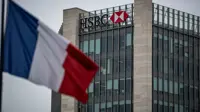RBI freezes credit derivatives plan to limit unchecked credit expansion
20 Jun 2008
The Reserve Bank of India's decision against opening up the credit derivatives market will curb unchecked expansion of bank credit by limiting banks' exposure to large corporate houses.
Credit derivatives were meant to allow banks to continue funding large borrowers even after touching the exposure limit. The RBI's decision would, however, make it difficult for large corporates with major investment plans to raise funds locally.
''It has been decided to keep in abeyance the issuance of the final guidelines on introduction of credit derivatives in India. The decision has been taken so as to be able to draw upon the experience of the financial sector of some of the developed countries, particularly in the current circumstances, in which the entire dimensions of the recent credit market crisis have not yet been gauged,'' RBI said in a statement issued on Thursday.
Like forward contracts and credit swaps, credit derivatives are meant to help users manage their exposure to credit risk. These are mostly privately-held and non-negotiable contracts.
Credit derivatives help banks to protect themselves against loss by transferring the risk of its customers unable to repay a huge loan to another party while keeping the loan on its books.
But such instruments have also been behind the crisis that rocked global financial markets last year and punched gaping holes in the balance sheets of several large banks and leading investment banking entities.
The Reserve Bank of India had issued the 'Draft Guidelines for Introduction of Credit Derivatives in India', on 26 March 2003, inviting comments from banks and other stake holders. However, taking into account the status of the risk management practices then prevailing in the banking system, the issuance of final guidelines had been deferred.
RBI followed it up with a second draft of the guidelines in May 2007-08. Based on the feedback received on draft guidelines, RBI issued yet another draft guidelines on 17 October 2007, for a fresh round of consultations.
The draft guidelines had proposed a phased introduction of credit derivatives, starting with the basic credit default swap. Primary dealers and banks were expected to transact in credit swaps depending upon the nature of the exposure and attendant credit risks.
Mutual funds and insurance companies, however, needed clearance from the Securities and Exchange Board of India (Sebi) and the Insurance Regulatory and Development Authority (IRDA), respectively, to use credit derivatives.
The guidelines, however, had limited deals to those that are carried out in rupees and to Indian companies. Borrowers also had to be rated.






















